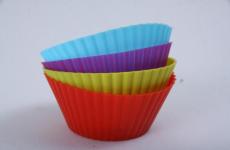What to sheathe the ceiling from. Finishing the ceiling yourself or by professional builders
Renovating an apartment or house is a troublesome task. In order for all the work to go quickly and easily, it is necessary to clearly plan it and decide on the necessary construction tools and materials. What is the best way to decorate the ceiling in an apartment so that the renovation does not inflate the budget, does not take a lot of effort and lasts a long time?
Cheap, beautiful, long lasting – what’s the best way to decorate the ceiling?
To choose a method for finishing any surfaces in an apartment, you need to find a balance between your own capabilities and desires. Taken into account:
- design project;
- the cost of the material and its application - when calculating, the cost of the tool is often overlooked, as well as the cost of further care, maintenance in its original form and the time after which replacement is necessary;
- stability when used in various rooms - for example, ceiling wallpaper is not recommended for bathrooms due to humidity and possible mold;
- durability – “set/paint and forget”;
- ease of installation - some cheap materials are difficult to apply, while the installation of others is best left to professionals;
- additional work - for example, leveling surfaces.

For each room you can choose something different. The most popular options are:
- whitewashing, painting;
- wallpapering;
- application liquid wallpaper;
- gluing tiles;
- hanging structures;
- stretch fabrics.
Let's talk in more detail about their advantages and disadvantages.
Whitewashing or painting
The most inexpensive ways to tidy up your ceiling. The differences are in the materials, their application and surface preparation. In the case of whitewashing, slaked lime is used, which is applied by roller, brush or spray method. The main disadvantages are that such a surface cannot be washed; it attracts dirt and dust well and generously stains those who touch it. It looks rough, and the only advantage of whitewashing is its low cost.
Painting requires a careful approach to leveling the surface and applying compounds in several stages - putty, primer, and painting itself.
This method is good for any living space, as it is not demanding on temperature and humidity, the surface is easy to clean, antifungal components prevent mold from growing, and tinting helps to achieve any color saturation. Finishing the ceiling cheaply and beautifully in this way is the easiest way; the only caveat is the need for careful leveling and preliminary cleaning.

Wallpaper
Wallpapering the ceiling is rarely used. This is due to the complexity of the application process, the visibility of imperfections and the selection features. For example, in small rooms you should avoid large patterns - this will make the space even smaller.
Consult with the designer: a combination of wall and ceiling decoration can give the effect of a “box” - a shrinking space.
Smooth material requires a perfectly leveled and puttied surface, so voluminous wallpaper that masks unevenness is often chosen for the ceiling. Another problem is the difficulty of combining the pattern on the rolls and gluing large panels: this is almost impossible to do alone.
An option that combines a paper coating and ease of painting is liquid wallpaper. A mixture of cellulose chips and decorative compounds is applied like putty. No particularly careful leveling of the ceiling is required; it is possible to use different colors and create patterns. The only drawback is high price. It is also not recommended to use wallpaper in general in the bathroom - the porous structure will be an excellent home for mold.

Ceiling tiles
Simple and inexpensive way ceiling pasting. If you need to finish the ceiling in your apartment cheaply and with a minimum of effort, this is what you need. The surface often does not need either putty or leveling. The main substance is polystyrene foam, which does not emit harmful substances, so this type of coating can be used in any residential premises. An exception is the bathroom, since the porous structure can become a “home” for fungus.
Gluing takes little time, you will need:
- tiles (calculated by surface area);
- glue (all versions of “liquid nails”);
- pencil for marking;
- a stationery knife for cutting holes or adjusting to size;
- ladder.
To design the transition from wall to ceiling, you need a ceiling plinth. Often, to give a noble appearance, the slabs are painted with water-based paint after drying. Please note: the glue can release harmful substances when drying, so you should not stay in the room for a long time at this time.

Suspended structures
Their essence is the installation of fasteners into walls or ceilings onto which coating plates are attached (or simply laid). Most often they are square or in the form of long stripes, but other geometric shapes are also possible. The main materials are plastic, metal, drywall. The main advantages include:
- Possibility of use in any room;
- variety of textures, colors, types of coating;
- suitable even for curved ceilings with interpanel seams that cannot be masked;
- excess wires can be hidden under the coating, making it possible to install built-in lamps and develop individual lighting schemes.
There are also disadvantages. Thus, hanging structures “eat up” part of the height of the room, which can be sensitive for small rooms. An accurate calculation of the geometry of the fastenings is also necessary.

Stretch ceiling
Popular finishing method modern apartments. The advantages of hanging ones include durability, undemandingness to the geometry of the room, and the ability to implement unusual design solutions. One of the important features is the ability to retain water when flooded, and after draining, return to its previous shape. This quality is especially important in both multi-apartment and individual residential buildings.
What is the best way to decorate the ceiling in an apartment? You decide. And the consultants at the Lanskoy TC finishing materials stores will help you make the right choice.
Finishing options can be divided into several large groups, each of which we will discuss below.
Plaster ceilings
Advantages
Very easy to apply
Wear-resistant
Fades very slowly in the sun
Creates an interesting appearance
Flaws
High price
Not suitable for wet cleaning
Difficulty of restoration
Dropped ceilings
Most apartment owners today give their preference precisely because they are not picky about the quality of the ceiling surface.

It is based on thin plates of steel or aluminum, which, in turn, are coated with a protective layer of varnish. This ceiling comes in a variety of colors and is well suited for rooms with a small area.
Advantages of slatted ceilings
Durability
Moisture resistance
Ease of installation
Fire safety
Flaws
Flaws
Susceptibility of rack plates to deformation
Difficulty accessing the space above the ceiling

This version of suspended ceilings is optimal for do-it-yourself repairs.
Advantages of plastic or PVC lining
Easy to install
Not afraid of moisture
Does not absorb unpleasant odors
Have a large selection of colors
Flaws
Fire hazard
Sensitive to mechanical damage
May fade if exposed to constant sunlight

This is not a particularly popular type of ceiling decoration in an apartment, most often in offices or sales areas.
Advantages of cassette ceilings
Moisture resistance
Fire safety
Easy to install
Flaws
High price
Concealing the height of the room
Lack of sound insulation

This is the most common finishing option
Advantages
Perfectly hides all surface imperfections
Drywall is absolutely safe from an environmental point of view
Easy to install
Has a low cost
Flaws
Concealing the height of the room
Lack of moisture resistance
The need for further coloring, therefore increasing costs

This type of ceiling is a decorative adhesive tile. is popular with many people because in some cases it can replace expensive stucco on the ceiling.
Advantages of ceiling tiles
Very practical
Have good moisture resistance
Easily mounts to the ceiling
Flaws
Requires a perfectly flat ceiling surface
Cheap ceiling tiles are very fragile and are unlikely to have the advantages listed above
Tensioners

This is a large PVC sheet that is stretched over special fastening profiles.
Advantages
Stretch ceilings are waterproof
Moisture resistant
Fireproof
Have high strength
Huge variety when choosing their colors
Flaws
Expensive
Difficulty in DIY installation

Based on the name, you can guess that such ceilings are a combination various types suspended structures. This could be, for example, a combination of a plasterboard ceiling with a stretch ceiling or a mirror one. This finishing option will help create a special mood in the room and give it a zest.
Ceilings made of natural materials
If, when choosing a material for ceiling decoration, your first priority is its environmental friendliness, then we advise you to pay attention to the finishing options listed below.

This is natural wooden plank or MDF sheet. Such boards are attached to the ceiling using special shunt connections. Lining from natural wood May be different shades- from very light to dark. The desired shade can also be created using stain.
The undeniable advantages of wooden lining are its moisture resistance, durability, strength and, of course, environmental friendliness.

This type of ceiling is more suitable for a private home or cottage, but it will also look interesting in an apartment. A wooden ceiling will not only be environmentally friendly, but also a practical decorative solution. But when processing it, it is very important to remember that you need to use materials that will not subsequently prevent the ceiling from “breathing.”

The advantages of cork ceilings are very difficult to overestimate. Due to the fact that cork boards are impregnated with wax, dust and condensation do not settle on them. Also choosing this option finishing, you can be sure of its environmental friendliness and durability.
Let's look at the stages of ceiling repair
To make the apartment look perfect, when starting to renovate the ceiling, it is worth dividing it into several phases. First of all, you need to clean it. It practically doesn’t matter what materials you are going to use, if the ceiling is not carefully prepared, even the most the best materials, they will either simply fall off, or it will become very unpleasant to look at them. Each technology requires its own preparation, some more, some less.
Preparing the ceiling for finishing
Of course, if the paint or mortar on the ceiling holds tightly, then they can serve as the basis for some kind of finishing. But if the ceiling is covered with dust or cracked paint, as well as old peeling whitewash, cleaning is necessary. In general, it is generally recommended to strip the ceiling before solid foundation and start all other work from there. Read more about → on the website following the link.

Plastering or leveling the ceiling with plasterboard is often a necessary stage of finishing the ceiling
Ceiling leveling
The next step should be to level the ceilings, if, of course, it is required. When you raise your head and want to cry a little from the gray crooked slab hanging over you, then to level the ceiling, it is best to use drywall. This is an excellent material - light, reliable, durable. And it’s relatively easy to work with, even if you decide to do everything yourself.

However, drywall should only be used in the hallway or living rooms. In the kitchen or, especially, in the bathroom, the use of plasterboard is undesirable, although there are moisture-resistant sheets. In the kitchen, ceilings lined with plasterboard will absorb the smells of the various dishes you prepare. In the bathroom, due to excess dampness, drywall can swell and, at a minimum, lose its aesthetic properties. At the very least, the glue simply won’t hold up and it will fall off, or its trim will fall off. So in such places it would be better to use plaster and ordinary water-based emulsion, paint or other materials that work well in conditions of high humidity and frequent temperature changes. Panels suitable for the bathroom: PVC, slatted ceiling etc. If you use drywall, use moisture-resistant one, it is recommended for wet rooms.
In other cases, you need to use plaster to level the ceiling. Please note that a ceiling covered with plasterboard still needs to be finished; plasterboard is only used to level the ceiling and create a base for finishing.
Technologies and options for finishing the ceiling with your own hands

Let's look at ceiling finishing technologies that you can do yourself
Each finishing technology has its pros and cons. That's why, best technology does not exist, and we will list the main options for finishing the ceiling and describe their advantages and disadvantages, touch on technology and you will find out how and with what to finish the ceiling, and whether it can be done with your own hands. We will also definitely consider what preparation is needed for each type of finishing, because sometimes it is important not to overdo it, and sometimes, on the contrary, you need to do it efficiently.
Do-it-yourself whitewashing of ceilings
Stretch ceilings are considered classics in modern times, they are inexpensive and protect against leaks from above. Compared to the “plaster + putty + paint” complex, stretch ceilings are cheaper. Installed by craftsmen in a matter of hours (2-3 hours per room).
Behind them, like any other suspended ceilings, you can hide communications: ventilation, electrical, etc. In suspended ceilings you can install lamps of almost any shape and size, from spot to wide rectangular and round shapes, as well as any chandeliers, they are attached not to the ceiling, but to the base (ceiling).
Wood and materials made from it
The ceiling can also be finished with wood. These can be either suspended structures or, for example, lining that is attached to slats. It could even be laminate, that’s possible now. Slatted ceilings can also be made of wood.

Where and how best to finish the ceiling

Different rooms, depending on their purpose, require different ceiling finishes. More precisely, each type of finish may be suitable for a specific room, or maybe not. Let's take a closer look at all the finishing options and determine where and which one is best to use.
On our market there is a huge selection of materials specifically designed for finishing ceilings. They allow you to choose the right colors and textures for all types of rooms. In addition, a rich assortment makes it possible to select materials that are perfect for working in certain conditions. And you should be especially careful with this if, a few months after the repair, you do not want to deal with it again.
In living rooms, hallways and living rooms, you can use almost any material to decorate the ceiling. With the right selection of materials and high skill in performing the work, you can get a truly magnificent spectacle. Well, other rooms, as a rule, require a completely different approach. Therefore, in the bathroom it is better to use PVC tiles, panels, slats or paint - it is beautiful, reliable, durable and not afraid of moisture. Well, in the kitchen you can use plastic or again paint. Stretch ceilings are universal and fit everywhere, but in the bathroom there is a high probability of piercing it if it is located low.
 The choice of material for finishing the ceiling in the kitchen needs to be taken more seriously than for other rooms. Which is not surprising, because in no other room do finishing materials have to face such loads (well, perhaps even in →). Daily cooking places special demands on materials and work, as they cause constant changes in temperature and humidity, and in addition, they impregnate soft materials with corresponding odors, and not always only pleasant ones. In addition, ceilings are often covered with layers of grease and soot, which in no way gives them an aesthetic appearance.
The choice of material for finishing the ceiling in the kitchen needs to be taken more seriously than for other rooms. Which is not surprising, because in no other room do finishing materials have to face such loads (well, perhaps even in →). Daily cooking places special demands on materials and work, as they cause constant changes in temperature and humidity, and in addition, they impregnate soft materials with corresponding odors, and not always only pleasant ones. In addition, ceilings are often covered with layers of grease and soot, which in no way gives them an aesthetic appearance.
If you want to save as much as possible, you can use simple water-based paints. They, unlike lime, are easy to clean and dirt can often be removed in a matter of minutes using a regular damp cloth. However, there are many better ways to decorate ceilings without spending too much money.
Of course, this can be done using plastic panels. And PVC can really become ideal option. After all, PVC panels are beautiful, easy to install, allow you to choose exactly the colors you need, and simply stand up well to numerous washes and cleanings. Of course, if you use plastic panels, you don’t have to worry about them absorbing grease or unpleasant odors. After all, such weaknesses have never been noticed in plastic. Stretch ceilings are also suitable (they are suitable everywhere).

Bathroom ceiling
Bathroom ceilings must be moisture resistant. Any moisture-resistant material is suitable. A suspended structure is desirable in order to install in it beautiful lamps, carry out electrical work, make ventilation.
In other rooms, the ceiling decoration is not limited in any way, except on the balcony. Good luck choosing materials and working!
Leave your tips and comments below. Subscribe to
Modern cosmetic renovation of any room is not complete without decorating the ceiling, be it simple city apartment, luxury cottage or Vacation home. But not every average person has an idea of how to decorate the ceiling in a room using simple materials, as well as a minimum of financial and physical costs.
Besides, the ceiling does not have to be made in a classic style– if you wish, you can even create a map of the starry sky above your head.
Main ceiling design options:
- whitewash;
- coloring;
- wallpapering;
- pasting with ceiling tiles;
- liquid wallpaper;
- suspended ceiling;
- suspended ceiling.
Each of these options has its own characteristics. So, not every ceiling can be suitable for painting due to its uneven surface. In such cases, it is better to resort to using tension or hanging fabric, which will hide all the constructive shortcomings of the builders.
Whitewash
- Our grandmothers used this method of finishing the ceiling. when they were setting up their homes. In modern homes and offices, in corridors and in the hall, you can often find whitewashed ceilings, because the necessary finishing materials are quite inexpensive.
- However This finishing option can only be used for perfectly flat surfaces. Otherwise, the result may be the opposite of what you want.
- The main disadvantage of using whitewash as finishing material is dirt. Firstly, it is not recommended to wet the whitewashed surface, which is a serious limitation for choosing this method of finishing the ceiling in rooms such as a kitchen, bathroom, or boiler room. Secondly, whitewashing leaves difficult-to-remove stains on all surfaces where the solution gets in contact.
To avoid lengthy post-repair cleaning, the following whitewashing technology is recommended:
- Cover the floor with cellophane film or newspapers.
- Remove furniture from the room, and if this is not possible, cover it with cellophane film or special covers.
- Prepare whitewash (chalk or lime).
- Whiten surfaces with brushes one or more times.
Advice! No matter how carefully the whitewashing is carried out, splashing is inevitable, so it is recommended to cover the floor and use gloves and work clothes.
Coloring
This finishing method is becoming increasingly popular. As for the whitewashed option, in in this case a perfectly flat ceiling is required - almost anyone who has performed this procedure at least once can tell you how to decorate it with paint.
Painting technology:
- putty and sand ceiling;
- prime surface diluted water-based paint;
- carry out coloring surfaces 1-2 times.

Painting the ceiling, compared to other methods of finishing it, has several undeniable advantages:
- special paint is not afraid of water, so painted ceilings can be safely washed and even use special products;
- if desired can be easily changed color scheme rooms, just repaint the ceiling;
- this option is quite cheap and accessible.
Pasting ceilings with wallpaper and slabs
Wallpapering
When choosing a room design option, many still stop at the usual wallpaper. This material is the best you can use to decorate the ceiling in residential premises yourself.
Wallpaper is great even for covering not too smooth and cracked surfaces. This procedure is inexpensive and does not require large costs for materials.

The disadvantage of this method of finishing ceilings is high labor intensity. It is necessary to carefully ensure that air does not accumulate under the wallpaper.
This problem is especially acute for rolls with large widths. In addition, it is better to carry out gluing work together - this should be taken into account before finishing the ceiling yourself.
Ceiling tiles
As with wallpapering the ceiling, ceiling tiles do not require a perfectly flat surface. They easily hide all minor imperfections, including small cracks and not very prominent irregularities.
Carefully! Ceiling tiles has a soft texture. It should be glued very carefully, otherwise traces may remain in the places of pressure that will be impossible to remove.

Before you finish the ceiling in a room by covering it with special slabs, you need to decide where the so-called starting point will be. It is recommended to place it in the most visible corner and start gluing the ceiling from there.
The second option is to start gluing the slabs from the center of the room, cutting them evenly along the edges near the walls. Irregularities in the joints of walls and ceilings are perfectly hidden by ceiling skirting boards.
Liquid wallpaper
Liquid wallpaper or silk plaster– an excellent alternative to other methods of finishing the ceiling. They are able to give the ceiling special features of royal luxury and amazing grace, turning it into a real work of art.
In order to finish the ceiling with liquid wallpaper:
- Thoroughly clean the surface from dust and dirt.
- Drain the ceiling completely.
- Prime the surface.
- Apply silk plaster to the ceiling using a specially designed trowel.

However, applying this type of plaster is very complicated procedure and requires certain skills. Therefore, before finishing the ceiling, it is better to consult a specialist.
Suspended ceiling
This option is very popular when decorating city apartments, residential buildings, and office premises. The suspended ceiling is a metal frame, attached to the ceiling and lined with removable panels.
Much is known about how best to finish a ceiling using this method. The main task is the choice of material.
Best used for kitchens and small spaces plastic panels . This material is easy to clean and interacts well with cleaning agents, and is resistant to constant exposure to moisture and steam. It is often used to decorate bathrooms and toilets.

But in ordinary rooms you can use panels from any materials. The most common is drywall.
It is easy to cut and therefore is excellent for decorating figured suspended ceilings, which is often practiced in large halls and living rooms. Among the disadvantages of plasterboard boards, we can highlight them instability to leaks.

The main "minus" suspended ceiling is that it significantly reduces the height of the ceilings. Therefore, this method is not suitable for decorating low rooms.
Advantages of suspended ceilings:
- the ability to change individual slabs (in case of leaks or cracks in the slabs, you will not have to change the entire ceiling);
- the ability to hide any ceiling imperfections, including deep cracks and relief that cannot be eliminated;
- the ability to hide any ceiling communications (pipes, wiring, etc.).
Almost everything was repaired. And here various difficulties and difficulties may arise. For example, with the choice of finishing material. How to decorate the ceiling, walls or floors in the house? What's better? Such questions arise all the time. In the article we'll talk about finishing ceilings. What options are there?
We use paint and whitewash
Painting and whitewashing ceilings is a long time ago known method. The surface is leveled using various building mixtures. It is then coated with water-based paint or whitewash.

This method has both its pros and cons. The first include low cost and simplicity (of course, if the surface is fairly flat). The downside is that it's a lot of dirt. This especially applies to whitewashing. You will have to cover it with something or remove all the furniture from the room, close the floors and windows. Otherwise, everything will be covered in whitewash stains.
Applying wallpaper
There is another inexpensive one quick way- this is the use of wallpaper. A roll of such material can be purchased inexpensively. In addition, today you can find wallpaper produced specifically for ceiling stickers on sale.

You can use liquid wallpaper, which looks much more beautiful than regular wallpaper. They are applied to a primed surface. The ceiling must be dry and dust-free. Wallpaper is applied using a grater or spatula. If applied using a construction spray gun, there is no need to rub them.

The use of liquid wallpaper makes it possible to create designs on the ceiling. This design will look original.
Use of suspended structures
Today, conventional wallpaper and whitewash are being replaced by modern materials. For example, suspended structures are found in many city apartments.

The basis of such structures is a frame. It is attached directly to the sub-ceiling. Then the panels are mounted on the frame. You can use a wide variety of materials. Panels made of plastic, wood or metal are available for sale.

Wooden lining looks good and is an environmentally friendly material.
Wood is afraid of moisture, so it is better not to use it in the kitchen and bathroom.
Plastic panels can be placed in any room. They last a long time and are easy to maintain. You can even find mirror panels in suspended ceilings. Such designs look respectable, but are also expensive.

The most popular are plasterboard sheets. This material is inexpensive and easy to install. A plasterboard ceiling can last for proper care many decades.
Suspended structures have a number of advantages and disadvantages. The first include:
- Possibility to design a multi-level ceiling. This variety has become very popular lately.
- In the interceiling space you can hide various communications. All wiring and ventilation systems will not be visible. In addition, it becomes possible to place built-in lamps anywhere on the ceiling.
- Facilitates structural repairs. If for any reason you damage one panel, it can be easily replaced. At the same time, the rest of the structure can be left untouched.

The disadvantages include a decrease in free space in the room. The hanging structure takes from 7 to 12 cm in height. Therefore, if the room has low ceilings, then it may be better to do with whitewashing or wallpapering.
Stretch ceiling

A wide variety of ceiling design options is provided by the use of tension structures. You can easily match the color to your interior. The canvas can be of a variety of colors. In addition, you can install suspended ceilings with a glossy, matte or mirror effect. It is also possible to place a drawing or photograph on the ceiling.
The forms of design of suspended ceilings themselves are also varied. You can make multi-level or tent-like, tiered or wave structures.

In addition, the canvas is not afraid of moisture and is easy to maintain. This ceiling can be installed in any room. It is fireproof. Stretch ceiling will protect your home from flooding. If neighbors from above flood with water, the canvas will be able to retain up to 100 liters of liquid. Then you just need to drain the liquid and dry the structures.
Installation is carried out in just a few hours (of course, if the craftsmen are working). Baguettes are attached around the perimeter of the room, onto which the canvas is stretched (using a heat gun).
This design will subtract only 3 cm from the ceiling height. At the same time, wiring can be placed in the interceiling space.
If we talk about cost, it will depend on the choice of material. Both imported and domestically produced canvas is available for sale. The second option is cheaper, but the quality is not always at a high level.
Video
Master class on finishing the ceiling with liquid wallpaper:
Photo

















